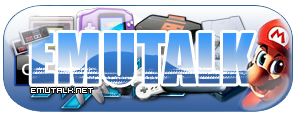You are using an out of date browser. It may not display this or other websites correctly.
You should upgrade or use an alternative browser.
You should upgrade or use an alternative browser.
News
SSF v0.12 PreviewVer R31 (Sega Saturn Emulator) released!
May 05
- 1,795
- 0
Created by Shima is one of the best Saturn emulators. He was the first to emulate commercial games.

Changelog:

 github.com
github.com

Changelog:
– Fixed persons
Release PreviewVer · shimazzz/SEGASaturnEmulator-SSF
Contribute to shimazzz/SEGASaturnEmulator-SSF development by creating an account on GitHub.
BigPEmu v1.12 released!
May 05
- 1,380
- 0
Created by Rich Whitehouse, BigPEmu is the first Atari Jaguar and Jaguar CD emulator to offer compatibility with the entire commercially available cartridge library and offers excellent performance and a wide variety of unique features.
It should be noted that at the base it was a closed source emu which was integrated into the Atari50 compilation. Without a shadow of a doubt, Jaguar's best emulator in front of Phoenix (which remains the best 3DO emulator), the VirtualJaguar, Mame and everything else.
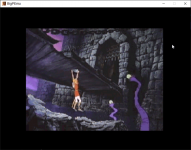
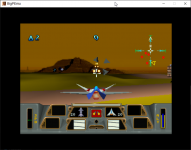
Changelog:
It should be noted that at the base it was a closed source emu which was integrated into the Atari50 compilation. Without a shadow of a doubt, Jaguar's best emulator in front of Phoenix (which remains the best 3DO emulator), the VirtualJaguar, Mame and everything else.


Changelog:
Version 1.12
– New D3D12 video plugin. The shader tool has also been updated and supports generating DXIL.
– New Windows ARM64 builds. Less frequently used platform-dependent functionality may remain unimplemented on this platform.
– Added a Blitter capture feature for...
Play! v0.65 released!
May 04
- 1,888
- 0
Play is an emulator of PlayStation 2 and Namco System 2X6 (as well as the System 147/148 variants) for Windows/MacOS/iOS/Android. It is currently written in C/C plus and uses a cacheting and instruction recompilation system to achieve better performance while emulating the CPU.
The emulator can operate a set of games. The author's goal is to achieve a level of quality that will allow anyone to play their favorite PlayStation 2 game on their PC.
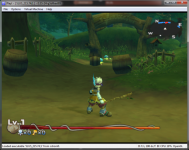

 github.com
github.com
The emulator can operate a set of games. The author's goal is to achieve a level of quality that will allow anyone to play their favorite PlayStation 2 game on their PC.

– Minor optimizations.
– Compatibility improvements (Fatal Frame 2/3).
– Fixed map rendering in Oneechambara games.
– Reorganized Namco System 147 arcadedefs and added some new ones.
GitHub - jpd002/Play-: Play! - PlayStation2 Emulator
Play! - PlayStation2 Emulator. Contribute to jpd002/Play- development by creating an account on GitHub.
2024-05-03 Recent Releases
May 03
- 1,067
- 0
* Flycast Dojo 6.18 [Arcade] - https://github.com/blueminder/flycast-dojo/releases
* Gopher2600 0.30.1 [Atari 2600] - https://github.com/JetSetIlly/Gopher2600/releases/
* Mark5 2.0.0 [Hitachi BML3] - http://s-sasaji.ddo.jp/bml3mk5/download.htm
* Emulicious (2024-04-30) [Multi-system] - http://emulicious.net/news/
* JGenesis 0.7.1 [Genesis/Megadrive] - https://github.com/jsgroth/jgenesis/releases
* WinArcadia 32.4 / DroidArcadia 2.5 [s2650-based] - https://amigan.yatho.com/
* Gopher2600 0.30.1 [Atari 2600] - https://github.com/JetSetIlly/Gopher2600/releases/
* Mark5 2.0.0 [Hitachi BML3] - http://s-sasaji.ddo.jp/bml3mk5/download.htm
* Emulicious (2024-04-30) [Multi-system] - http://emulicious.net/news/
* JGenesis 0.7.1 [Genesis/Megadrive] - https://github.com/jsgroth/jgenesis/releases
* WinArcadia 32.4 / DroidArcadia 2.5 [s2650-based] - https://amigan.yatho.com/
ares v138 released
May 02
- 1,385
- 0
ares is a multi-system emulator that began development on October 14th, 2004. It is a descendant of higan and bsnes, and focuses on accuracy and preservation.
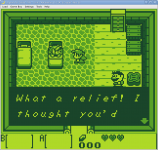
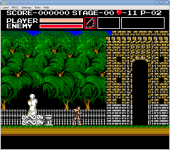
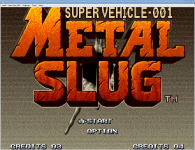
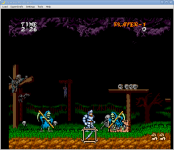
Changelog:




Changelog:
Atari 2600
- Improved 6502 CPU emulation; all unofficial opcodes are now implemented
- Improve handling of the HMOVE register
- Refactor of TIA; fixes many emulation issues but still imperfect
- Implement correct 6502 reset timing
Bandai - WonderSwan / WonderSwan Color
- Minor fixes to v30mz CPU emulation
- Emulate...
RPCS3 v0.0.32 Alpha has released!
May 01
- 1,628
- 0
Created by DH and Hykem (and joined by a set of developers), RPCS3 is a multi-platform Playstation 3 emulator that aims to become as complete as possible. It was primarily a disassembly but now pushes performance to the point of running a certain number of commercial games, thus becoming the first PS3 emulator emulating commercial games, however it requires an extremely high-performance PC.
Indeed, you will need nothing less than a CPU type core i7 plus 4Ghz (see minimum config required on the official website), a recent nVidia GTX graphics card, high-performance DDR4/5 memory, or a recent operating system to hope to launch games in a relatively smooth mode (but be careful it depends a lot on builds and games).
Several rendered is available to you: None, OpenGL, DirectX12 (Windows 10 only) and Vulkan (which aims to eventually replace...
Indeed, you will need nothing less than a CPU type core i7 plus 4Ghz (see minimum config required on the official website), a recent nVidia GTX graphics card, high-performance DDR4/5 memory, or a recent operating system to hope to launch games in a relatively smooth mode (but be careful it depends a lot on builds and games).
Several rendered is available to you: None, OpenGL, DirectX12 (Windows 10 only) and Vulkan (which aims to eventually replace...
Rosalie’s Mupen GUI v0.5.9 has released!
May 01
- 1,417
- 0
It is a user interface that is simple to use for mupen64plus (which it integrates), free and open source is written in C-plus.

Changelog:

 github.com
github.com

Changelog:
– Fix parallel-rsp regression introduced in v0.5.8 (see libretro/parallel-rsp-12)
– Fix corruption when using GLideN64 and resizing the window (seet gone/GLideN64-2835)
– Fix changing save state slot always selecting slot 0 on some system configurations
– Fix changing speed factor always using 0% on some system configurations
– Add color settings for the OSD in the settings dialog
– Add 'Test Rumble' button to the options dialog in RMG-Input
– Add 'Play Game with State' to the context menu of the ROM browser
– Add '-load-state-slot' commandline option
– Update cheats and GLideN64
GitHub - Rosalie241/RMG: Rosalie's Mupen GUI
Rosalie's Mupen GUI. Contribute to Rosalie241/RMG development by creating an account on GitHub.
2024-04-26 Recent Releases
Apr 26
- 1,272
- 0
* Qemu 7.2.11, 8.2.3, 9.0.0 [PC] - https://download.qemu.org/
* SDLMAME 0.265 for Mac - https://ports.macports.org/port/mame/details/
* SDLMAME 0.265 for RPi - https://stickfreaks.com/mame/
* MAMEUI 0.265 - http://www.mameui.info/ or https://messui.1emulation.com/
* NegaMAME 0.265-1 - http://babelsoft.net/products/negamame.htm
* WolfMAME 0.265 - https://github.com/mahlemiut/wolfmame/releases
* PyBoy 2.0.3 [Gameboy] - https://github.com/Baekalfen/PyBoy/releases
* MAME 0.265 (Official) - https://www.mamedev.org/release.html
* Erockus 11.9 [Front-end] - http://erockus.elementfx.com/arcade.html
* SDLMAME 0.265 for Mac - https://ports.macports.org/port/mame/details/
* SDLMAME 0.265 for RPi - https://stickfreaks.com/mame/
* MAMEUI 0.265 - http://www.mameui.info/ or https://messui.1emulation.com/
* NegaMAME 0.265-1 - http://babelsoft.net/products/negamame.htm
* WolfMAME 0.265 - https://github.com/mahlemiut/wolfmame/releases
* PyBoy 2.0.3 [Gameboy] - https://github.com/Baekalfen/PyBoy/releases
* MAME 0.265 (Official) - https://www.mamedev.org/release.html
* Erockus 11.9 [Front-end] - http://erockus.elementfx.com/arcade.html
2024-04-19 Recent Releases
Apr 19
- 1,475
- 0
* Gopher2600 [Atari 2600] - https://github.com/JetSetIlly/Gopher2600/releases/
* Hatari 2.5.0 [Atari ST] - http://download.tuxfamily.org/hatari/
* Pyboy 2.0.2 [Gameboy] - https://github.com/Baekalfen/PyBoy/releases
* WinArcadia 32.3 [s2650-based] - https://amigan.yatho.com/
* dgVoodoo 2.82.5 [Plugin] - http://dege.freeweb.hu/dgVoodoo2/dgVoodoo2/
* JRom Manager 3.0.3 [Rom Manager] - https://github.com/optyfr/JRomManager/releases
* Hatari 2.5.0 [Atari ST] - http://download.tuxfamily.org/hatari/
* Pyboy 2.0.2 [Gameboy] - https://github.com/Baekalfen/PyBoy/releases
* WinArcadia 32.3 [s2650-based] - https://amigan.yatho.com/
* dgVoodoo 2.82.5 [Plugin] - http://dege.freeweb.hu/dgVoodoo2/dgVoodoo2/
* JRom Manager 3.0.3 [Rom Manager] - https://github.com/optyfr/JRomManager/releases
2024-04-12 Recent Releases
Apr 12
- 1,603
- 0
* WinArcadia 32.3 [s2650-based] - http://amigan.1emu.net/releases/
* Mednafen 1.32.1 [Multi-system] - https://mednafen.github.io/releases/
* Clownmdemu 0.7.1 [Genesis] - https://github.com/Clownacy/clownmdemu-frontend/releases
* HBMAME 0.245.18 [Arcade] - https://hbmame.1emulation.com/
* Sameboy 0.16.3 [Gameboy] - https://sameboy.github.io/downloads/
* dgVoodoo 2.82.4 [Plugin] - http://dege.freeweb.hu/dgVoodoo2/dgVoodoo2/
* Mednafen 1.32.1 [Multi-system] - https://mednafen.github.io/releases/
* Clownmdemu 0.7.1 [Genesis] - https://github.com/Clownacy/clownmdemu-frontend/releases
* HBMAME 0.245.18 [Arcade] - https://hbmame.1emulation.com/
* Sameboy 0.16.3 [Gameboy] - https://sameboy.github.io/downloads/
* dgVoodoo 2.82.4 [Plugin] - http://dege.freeweb.hu/dgVoodoo2/dgVoodoo2/
2024-04-05 Recent Releases
Apr 05
- 1,572
- 0
* SDLMAME 0.264 for Mac - https://ports.macports.org/port/mame/details/
* SDLMAME 0.264 for Ubuntu - https://sdlmame.wallyweek.org/download/
* Flycast Dojo 6.12 [Arcade] - https://github.com/blueminder/flycast-dojo/releases
* Groovymame 0.264 sr220b - https://github.com/antonioginer/GroovyMAME/releases
* ScummVM 2.8.1 - https://www.scummvm.org/downloads/
* Emulicious (2024-03-31) [Multi-system] - http://emulicious.net/news/
* WinArcadia 32.1 [s2650-based] - https://amigan.yatho.com/
* NestopiaUE 1.52.1 [NES] - http://0ldsk00l.ca/nestopia/
* JRom Manager 3.0.2 [Rom Manager] - https://github.com/optyfr/JRomManager/releases
* Rom Vault 3.7.0 [Rom Manager] - https://www.romvault.com/
* SDLMAME 0.264 for Ubuntu - https://sdlmame.wallyweek.org/download/
* Flycast Dojo 6.12 [Arcade] - https://github.com/blueminder/flycast-dojo/releases
* Groovymame 0.264 sr220b - https://github.com/antonioginer/GroovyMAME/releases
* ScummVM 2.8.1 - https://www.scummvm.org/downloads/
* Emulicious (2024-03-31) [Multi-system] - http://emulicious.net/news/
* WinArcadia 32.1 [s2650-based] - https://amigan.yatho.com/
* NestopiaUE 1.52.1 [NES] - http://0ldsk00l.ca/nestopia/
* JRom Manager 3.0.2 [Rom Manager] - https://github.com/optyfr/JRomManager/releases
* Rom Vault 3.7.0 [Rom Manager] - https://www.romvault.com/
SpecEmu v3.4 build 01.04.24 released!
Apr 03
- 1,463
- 0
SpecEmu is a Spectrum emulator created to run on Windows, it requires DirectX. Entirely written in Assembler, it is therefore very fast and faithfully reproduces a 'X Spectrum' hardware.
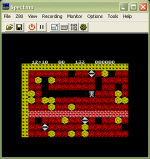
 specemu.zxe.io
specemu.zxe.io

The Unofficially Official Home of SpecEmu
 specemu.zxe.io
specemu.zxe.io
GB Enhanced-- v1.8 released!
Apr 03
- 1,378
- 0
Created by DS Baxter (aka)Shonumi Ikozumo) GBE an emulator of GameBoy/Color, GBA and NDS for Windows. The aim is to create an emulator.Ultra-portableusing C and SDL, document the functions of the Game Boy by a clear code, and add many improvements (graphic filters, codes, custom sprites, etc.).
– Reworked Pokemon Mini netplay to be much simpler. All players need to do isole each point instance of GBE to the correct player (e.g. Player 1, Player 2, etc.) using the F4 hotkey.
– Added support for the Glucoboy. GBE now allows players to manipulate various stats that unlock in-game Glucose Reward Points.
– Improved support for the Campho Advance. Menus work, contact data can be saved, and handles basic virtual calls. No own audio/video yet.
– Improved support for the Play-Yan and Play-Yan Micro. Audio/video output yet
– Added support for the Nintendo MP3 player. No audio/video output yet, but menus are accessible...
– Reworked Pokemon Mini netplay to be much simpler. All players need to do isole each point instance of GBE to the correct player (e.g. Player 1, Player 2, etc.) using the F4 hotkey.
– Added support for the Glucoboy. GBE now allows players to manipulate various stats that unlock in-game Glucose Reward Points.
– Improved support for the Campho Advance. Menus work, contact data can be saved, and handles basic virtual calls. No own audio/video yet.
– Improved support for the Play-Yan and Play-Yan Micro. Audio/video output yet
– Added support for the Nintendo MP3 player. No audio/video output yet, but menus are accessible...
Hypseus Singe v2.11.2 released!
Apr 03
- 2,442
- 0
Hypseus is a Daphne fork created by Matt Ownby. It is an SDL2 version of Daphne and Monkey.
It is a program to play Laserdisc arcade games on PC, Mac or Raspberry Pi.
This version includes support for Monkey and Monkey2 for Fan Made and American Laser Games.
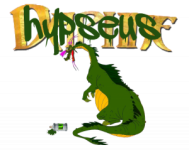
Hypseus is a Daphne fork created by Matt Ownby. It is an SDL2 version of Daphne and Monkey.
It is a program to play Laserdisc arcade games on PC, Mac or Raspberry Pi.
This version includes support for Monkey and Monkey2 for Fan Made and American Laser Games.
Changelog:
It is a program to play Laserdisc arcade games on PC, Mac or Raspberry Pi.
This version includes support for Monkey and Monkey2 for Fan Made and American Laser Games.

Hypseus is a Daphne fork created by Matt Ownby. It is an SDL2 version of Daphne and Monkey.
It is a program to play Laserdisc arcade games on PC, Mac or Raspberry Pi.
This version includes support for Monkey and Monkey2 for Fan Made and American Laser Games.
Changelog:
- SDL2 support
- Updated MPEG2 decoder
- Daphne VLDP 32bit upgrade
- Daphne and Singe 4k M2V support
- Singe libretro emulation path integration
- Singe Joystick, Lightgun EV_ABS [mouse] support...
NanoBoyAdvance v1.8.1 released!
Apr 03
- 1,590
- 0
It is a very precise GameBoy Advance emulator written in C. It aims at accurate cycle emulation where possible, while offering improvements such as better audio quality.
Some characteristics:
– Very high compatibility and accuracy (see Precision Chapter)
– HQ audio mixer (for games that use Nintendo's MusicPlayer2000 sound engine)
– Post-processing options (colour correction, xBR-scale and simulation of LCD phantom images)
– Support for backup status (10 backup locations available)
– Support for the game controller (the buttons and the axes can be remapped)
– Loading of ROM from archives (zip, 7z, Tar and limited support from RAR1)
– Emulation RTC
– Solar sensor emulation (e.g. for Boktai – The sun is in your hand)
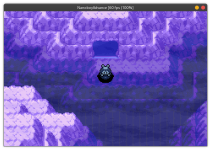
The changes:
Some characteristics:
– Very high compatibility and accuracy (see Precision Chapter)
– HQ audio mixer (for games that use Nintendo's MusicPlayer2000 sound engine)
– Post-processing options (colour correction, xBR-scale and simulation of LCD phantom images)
– Support for backup status (10 backup locations available)
– Support for the game controller (the buttons and the axes can be remapped)
– Loading of ROM from archives (zip, 7z, Tar and limited support from RAR1)
– Emulation RTC
– Solar sensor emulation (e.g. for Boktai – The sun is in your hand)

The changes:
– UI: implement an option to pause the emulator when the window is inactive
– UI: improve lack of response to input changes in the sprite...
GearSystem WIP (2024/04/02) released!
Apr 03
- 1,235
- 0
It is an 8-bit Sega emulator written in C- by Ignacio Sanchez. This is a version under development.
It emulates the following machines:
– Sega Mark III
– Sega Master System
– Sega Game Gear
– Sega Game 1000 (SG-1000)
– Othello Multivision
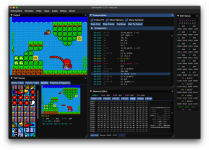

 github.com
github.com
It emulates the following machines:
– Sega Mark III
– Sega Master System
– Sega Game Gear
– Sega Game 1000 (SG-1000)
– Othello Multivision

GitHub - drhelius/Gearsystem: Sega Master System / Game Gear / SG-1000 emulator and debugger for macOS, Windows, Linux, BSD and RetroArch.
Sega Master System / Game Gear / SG-1000 emulator and debugger for macOS, Windows, Linux, BSD and RetroArch. - drhelius/Gearsystem
touchhE v0.2.2 released!
Apr 03
- 1,344
- 0
touchHLE is a high-level emulator (HLE) for iPhone OS applications. It runs on modern office operating systems and is written in Rust.
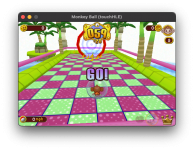
Using the HLE method, touchHLE is radically different from a low-level emulator (LLE) such as QEMU. The only code executed by the emulated processor is the binary of the application and a handful of libraries. touchHE takes the place of the iPhone OS and provides its own implementations of system frameworks (Foundation, UIKit, OpenGL ES, OpenAL, etc.).
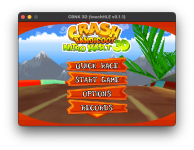
The aim of this project is to run the games of the first days of iOS. Only iPhone/iPod touch apps for iPhone OS 2.x have been tested so far. Support for modern 64-bit iOS applications is explicitly a non-objective, and support for non-gaming applications is unlikely to be given priority due to their complexity. On the other hand, it is likely that we try to support applications for some more recent 32-bit versions...

Using the HLE method, touchHLE is radically different from a low-level emulator (LLE) such as QEMU. The only code executed by the emulated processor is the binary of the application and a handful of libraries. touchHE takes the place of the iPhone OS and provides its own implementations of system frameworks (Foundation, UIKit, OpenGL ES, OpenAL, etc.).

The aim of this project is to run the games of the first days of iOS. Only iPhone/iPod touch apps for iPhone OS 2.x have been tested so far. Support for modern 64-bit iOS applications is explicitly a non-objective, and support for non-gaming applications is unlikely to be given priority due to their complexity. On the other hand, it is likely that we try to support applications for some more recent 32-bit versions...
Clownmdemu v0.7 released!
Apr 03
- 1,164
- 0
It is an emulator of Sega Megadrive.
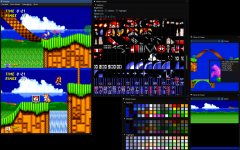
Online version available here.
The changes:

Online version available here.
The changes:
– Fixed missing audio in After Burner II.
– Fixed flipped graphics in Jim Power.
– The game’s name in now shown in the window title.
– Partially-implemented the V counter.
– Fixed OutRun and OutRun 2019.
– Vastly-improved Mega CD support.
– Sonic CD is now playable from beginning to end, from aside its special stages.
"New stub BIOS."
– PCM emulation added.
– CDDA emulation added.
– 6-button controller emulation added.
– Improved YM2612 emulation:
– Per-operator frequency emulation added.
– CSM emulation added.
– SG-EG emulation added.
– Fixed Sonic 3’s Competition Mode menu music.
– Fixed Contra: Hard Corps’ snare.
– Fixed latency when toggling rewinding while frame-advancing (para.
– Fixed build errors when not using MSVC (-8).
– Fixed compatibility with SDL...
Lime3DS Emulator v2105 released!
Apr 03
- 2,180
- 0
Lime is the Nintendo 3DS open source emulator based entirely on Citra, which it is continuing to develop.
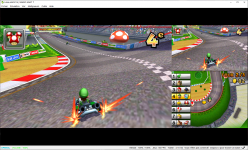
It is written in portability and versions are actively maintained for Windows, Linux, Android and macOS.
Changes since the previous version:
Notes
– This is the initial release of Lime3DS. Above patch notes are relative to Citra 2104
– If you were using the Android alpha builds of Lime3DS, you will need to uninstall that version before installing this one, as the app ID has changed been

 github.com
github.com

It is written in portability and versions are actively maintained for Windows, Linux, Android and macOS.
Changes since the previous version:
– Rebranded logos and strings to use Lime3DS’s branding over Citra’s
– Compatibility list is now stored locally
– Window title and Discord RPC now use full game titles instead of abbreviated those
– GSP-GPU: Fix framebuffer dirty bit
– HLE DSP: Fix sample clamping in SimpleFilter
– Fixed misc build issues with GCC and Clang
Notes
– This is the initial release of Lime3DS. Above patch notes are relative to Citra 2104
– If you were using the Android alpha builds of Lime3DS, you will need to uninstall that version before installing this one, as the app ID has changed been
GitHub - azahar-emu/azahar: An open-source 3DS emulator project based on Citra.
An open-source 3DS emulator project based on Citra. - azahar-emu/azahar
AMSpiriT v1.0 RC1 released!
Apr 03
- 1,191
- 0
AMSpiriT is an Amstrad CPC emulator for Windows encoded in c . . . by David Manuel. It was developed on the basis of documentation and technical information freely available on the Internet, without any provision of existing source codes.
The purpose of AMSpiriT is to reproduce as closely as possible the hardware behavior of a real CPC. In the spirit of an Amstrad CPC, ergonomics was thought out in order to be the most clean and intuitive possible.
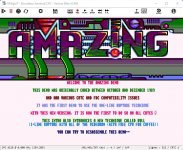
The changes:
{quote]
– IPF and HFE file formats are now supported.
– Binary files (with AMSDOS header) can be loaded into ram by dragging them onto emulator’s window.
– More and better command line options. Common file formats are automatically detected.
– Improved UX and interface
– Extended RAM support, up to 4MB
– Note: “Inert” key has been replaced by “ ALT” key for emulating “COPY” key on CPC keyboard
– And as always...
The purpose of AMSpiriT is to reproduce as closely as possible the hardware behavior of a real CPC. In the spirit of an Amstrad CPC, ergonomics was thought out in order to be the most clean and intuitive possible.

The changes:
{quote]
– IPF and HFE file formats are now supported.
– Binary files (with AMSDOS header) can be loaded into ram by dragging them onto emulator’s window.
– More and better command line options. Common file formats are automatically detected.
– Improved UX and interface
– Extended RAM support, up to 4MB
– Note: “Inert” key has been replaced by “ ALT” key for emulating “COPY” key on CPC keyboard
– And as always...
